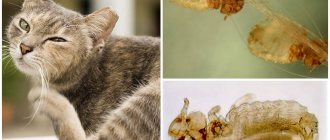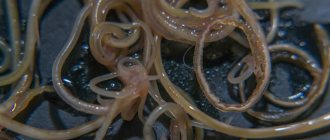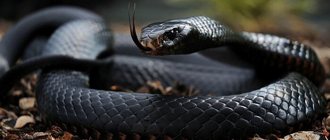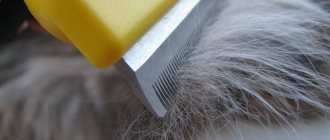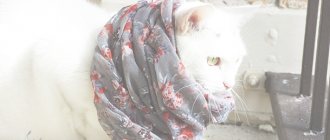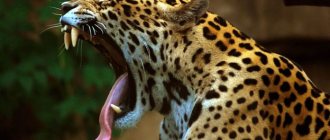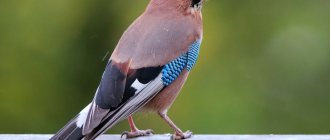Snakes have a very unique vision of the world.
Just imagine, snakes have poor vision, they only see movement. There is no hearing as such, but the inner ear is developed, capable of sensing the slightest vibrations of the soil. An extraordinary sense of smell, provided by supersensitive receptors in the nostrils, in the mouth and on the tongue (that’s why they stick out their tongues - they smell, and not at all trying to scare someone) helps to navigate in space. And their tongue is forked for a reason. Receptors on different tips of the tongue independently perceive odors. As a result, the snake has twice as much information about what the world around it smells like.
You can be sure that before you even see the snake, it already knows your weight, your smell, and what you had for breakfast.
So, to the question of whether a snake has a skeleton, the answer is unequivocal - yes. Its features are so amazing that bionics has not bypassed them. The Elizabeth robot by engineer Howie Choset from Carnegie Mellon University for research and searching for artifacts in the Egyptian pyramids is a prime example of this.
But not only skeletal features are of interest for bionic parametric synthesis. Thermal imagers, echo sounders and sound detectors are all results taken from the experience of natural modeling of the ubiquity of natural selection.
Skeletal structure
The question of whether snakes have a skeleton can be answered in the affirmative. Despite their amazing flexibility, these reptiles have a solid bony skeleton, which is characterized by freedom of joints.
Scull
Diapsid type with reduced temporal arches, kinetic - the bones are able to move apart significantly. The bones of the skull are divided into several types: quadrate, pterygoid, palatine, squamosal, temporal and maxillary. The jaws are separated in the center by elastic ligaments, and connected to each other in the same movable way, which allows the snake to stretch its mouth to the size of the killed prey. Structure of the snake’s skull
Teeth
Well developed, located on the upper and lower jaws. They have a thin, sharp shape, convenient for gradually pushing food deep into the esophagus. Snake teeth are not intended for chewing. Non-venomous reptiles have only short and thin teeth.
Did you know? The longest living snake is a species of reticulated python. Its length exceeds 12 meters and its weight is about 160 kilograms. This reptile lives in the Tama Zoological Garden in Tokyo. Another snake named Baby surpassed its relative in weight - in 1998, at the age of 25, she weighed 182.5 kg. This record was included in the Guinness Book of Records.
Poisonous species have elongated front teeth, similar to fangs curved inward. Poison teeth are hollow inside and connected to poison glands. When biting, the reptile inserts poisonous teeth into the body of the prey and injects poison along them. In some species, the front teeth can rotate 90 degrees when the mouth opens.
Spine and ribs
Since this creature has no limbs, its spine does not have specific sections. It is flexible, long, homogeneous, consists of identical vertebrae, to the lower part of which the ribs are movably attached. The longer the reptile, the more vertebrae it has: short and thick reptiles have an average of 150 vertebrae, and thin and long ones - up to 430. Snakes do not have a sternum, so they can stretch significantly in width, flatten and curl into as many rings as possible their length.Snake skeleton
Front and hind limbs
Completely atrophied. Some species have minor rudiments of the pelvic bones. Other species have a single pair of internal claws on either side of the anus, like vestigial hind limbs.
Types and names of snakes with photographs and descriptions
Snakes are considered to be very diverse animals in terms of species. The names of reptiles are sometimes striking in their number and huge range. These animals belong to the group of reptiles, the order of squamates.
In one snake family there can be a minimum of 8 families and a maximum of 20. Such a discrepancy directly relates to the fact that today scientists have discovered a huge number of new types of reptiles. And therefore it is difficult for them to divide them into any groups.
The most common families are:
- Colubridae
- Blind Snakes
- Aspidae
- Viperaceae
Many people know reptiles, since these animals were able to colonize most continents over a long period of time. Many snakes prefer hot climates, therefore, they live exclusively near the equator or in tropical countries. Toward the poles, the number of reptiles decreases significantly. And only the common viper can live in cold regions. Reptiles can live in almost any place, even in the oceans. Many colubrids and vipers dig holes and like to live underground.
Reptiles
The reptile lives in deserts, steppes, mountains, near rivers and lakes. Snakes are interesting animals, as they have an original appearance and move in a unique, even unusual way. The reptile has amazing features - a method of behavior and the ability to release poison. That is why they never cease to attract the attention of mankind.
There are a huge number of myths about snakes, which often cause great fear in people. Currently, scientists have been able to discover approximately 3,000 species of snakes. Among them there are both poisonous and non-poisonous.
Reptiles are non-venomous
- Already ordinary. This species is most often found in Eurasian countries. There is a distinctive mark on his head - these are 2 light spots. It lives in places where there are bodies of water. The snake loves to bask in the sun and is also able to move through trees. The reptile is also capable of swimming, diving, and remaining underwater for a long time without air.
Already
- Reticulated python. This reptile is considered the longest among its relatives. In nature, there was an individual whose length was approximately 12 m. The python lives in Asia. It can catch prey by moving through the trees, but at the same time loves to swim in the water.
Python
- Anaconda. This representative of reptiles is considered the heaviest. The weight of the animal sometimes reaches 200 kg. The anaconda is a fairly strong snake and most of its body is muscle tissue. The reptile's nostrils are closed with valves, so once upon a time in ancient times people called it a “water boa.”
Anaconda
Reptiles are poisonous
- Viper. This snake is more often found in nature than others. It lives, as a rule, on the territory of the Russian Federation and in some European countries. The viper likes to live with a couple, occupying a territory that is up to 4 hectares.
Viper
- Sandy efa. This snake has the most valuable venom from which people make serums and medicines. Efa is small in size, when it attacks a victim, it begins to move in the form of rings and hiss.
Efa
- King Cobra. It is considered one of the most poisonous reptiles. The cobra can also be called the largest among the poisonous representatives. The reptile loves to eat snakes of other varieties. It has so much poison that even a large elephant can die because of it.
The most poisonous
- Black Mamba. This individual is considered the fastest. The reptile is arboreal, and therefore moves through trees quite quickly. Attacks its own victims without warning.
Mamba
Despite the fact that snakes can only cause fear and panic in people, many decide to have such an animal at home. Some species may already disappear today, therefore, they need to be protected and not used for leather production.
Reproduction and offspring
A significant part of snake species reproduce exclusively by laying eggs, but some representatives of the suborder belonging to the class Reptiles and the order Squamate are typically classified as ovoviviparous or viviparous. For example, shield-tailed snakes are ovoviviparous, and their litter consists of 2-10 young. Mexican ground pythons lay about four relatively large eggs, and pseudopod snakes are represented by viviparous and oviparous species.
Numerous species belonging to the Aspida family begin active reproduction only once a year, with the onset of spring, accompanying this process with real fights between males for the attention of females. Such pronounced intolerance of males towards each other with the onset of the mating season makes it possible to see the clarification of the relationship between individuals, or the so-called “dancing” snakes
Almost all modern species of snake reproduce exclusively sexually, with the direct participation of a male and female, but individual representatives of families are quite prone to parthenogenesis - reproduction using unfertilized eggs and without the participation of males in this process. There are very rare exceptions among snakes, represented by true hermaphrodites - individuals that are both female and male.
Mating season
It starts in the spring. The courtship of males with females, due to the external characteristics of snakes, is quite simple. During the mating season, the female secretes a specific secretion , the smell of which attracts males. The male crawls along her trail, catches up and tries to stop her, blocking her path. Sometimes you can observe behavior in snakes that is somewhat reminiscent of a weasel. The male begins to cling to the female, crawling with her, repeating all her bends. Some even stroke it with their heads. Males of some species of snakes are aggressive. They may bite the female on the back or neck. Before mating, mating tournaments can be observed. “Clarification of relationships” between males performs two functions:
- The individual that will mate with the female is determined.
- The distribution of males in the population is regulated.
The numerical superiority of males guarantees the fertilization of each female in a short period. This is especially important for those snakes that inhabit northern latitudes. Mating tournaments can take place in the presence of a female. She watches the fight with outward indifference. But the main purpose of the snake ritual is not to show its strength to the female. The male's task is to drive away the opponent. The presence of a female is not at all necessary. Tournaments among snakes occur not because she is nearby, but at every meeting of males during the mating season.
Interesting: Keeping a land turtle at home
Reproduction by ovoviviparity
This unpronounceable word was coined by zoologists who observed snakes giving birth. With this type of reproduction, the female keeps the eggs within herself until the babies hatch from them. The mother's circulatory system penetrates the egg, thanks to which the fetus is nourished until birth.
All boas, asps, and some species of vipers are ovoviviparous. This method of procreation is very convenient for snakes, since the female can hunt and defend herself at this time. Reptiles that lay eggs in a nest are deprived of this opportunity. For example, the king cobra is forced to tirelessly stay near the eggs until the offspring are born.
The development of ovoviviparity and viviparity began in northern latitudes, since the snake is a cold-blooded animal and does not have the ability to warm the eggs with the heat of its body. When babies develop in the womb, they automatically have the mother’s body temperature, which makes it possible to develop normally even in unfavorable weather conditions.
Bearing offspring
Among snakes there are those that lay eggs in nests built in the most hidden corners, as well as ovoviviparous and viviparous.
Ovoviviparous
Ovoviviparous snakes - boas, copperhead snakes, tiger snakes - carry their offspring in their own body, but the baby grows and develops in the tail part of the mother's body in the egg. It feeds on protein, the mother supplies it with oxygen, and so on until the baby develops so much that it is ready to be born and be completely independent.
Such a unique way of giving birth to offspring is characteristic not only of snakes, but also of some fish. Once fully formed, the young snakes destroy the egg in which they grew, being born and hatching at the same time.
Laying eggs
Most snakes, according to traditional people's beliefs about them, lay eggs. They take the construction of a nest very seriously, in which they will stay for a long time. Eggs in a dense leathery shell are vulnerable and can become prey for birds, reptiles, and small predators. One female is capable of “bearing” from 4 to 20 eggs.
This is interesting! Snakes have the unique ability to store a male's sperm for years. One gentleman can become the father of 5-7 generations of baby snakes, which helps preserve the population in the most unfavorable periods.
Viviparous snakes
In viviparous women, after fertilization, the embryos begin to feed in the mother’s body; food, like everything else, is the yolk formed in the oviduct, but additional nutrition and oxygen are received thanks to special metabolic processes of the mother’s body. Cubs are born ready to get their own food, and they can fend for themselves. Among the livebearers are vipers, stripes and others.
The process of embryo development largely depends on weather conditions . At optimal temperature (26-32 degrees) and humidity up to 90 percent, a month or 39 days is enough. Cold weather can slow down the process for up to 2 months. Sometimes the female carries the babies for 3 or more months.
Preparing for snake mating
Before starting to breed snakes, a breeder should thoroughly study the biology of his pet. The fact is that the process and frequency of mating in reptiles varies from species to species over a fairly wide range. Some snakes are able to give birth several times a year, while others only once over several years. In addition, you should ask how the process of reproduction of this type of snake occurs in the wild and what is needed for this. Then it is advisable to simulate the necessary conditions in the terrarium as accurately as possible. Scaly, for example, for oviposition, they may need a hollow, stone or other shelter where they could build a nest.
Caring for offspring in snakes can also manifest itself in different ways. Some species, such as the well-known viper, after oviposition, consider their maternal duty fulfilled and leave their offspring to their fate. But the no less famous king cobra takes care of its babies until the end.
If you watch snakes emerging from eggs, you can see a lot of interesting things. Nature has provided newborns with everything they need to be born. At the tip of their nose they have an egg tooth, with the help of which the egg shell breaks through. After the start of independent life, the need for the egg tooth disappears, and it disappears without a trace.
The gestation periods of different species of snakes are also quite individual. However, one characteristic trend can be noted, namely, the gestation period in oviparous species is more fleeting than in ovoviviparous species.
Where do they live, what do they eat, how do snakes reproduce in nature?
Over a long period of evolution, snakes were able to colonize almost every continent except Antarctica.
In nature
Reptiles can live in a wide variety of environments.
But they prefer:
- Forests, forest-steppes
- Savannah
- Desert places, mountainous areas
Snakes penetrate rock crevices, swim, and climb trees. They often like to get into places where people live. They are found in areas of villages, summer cottages, city parks and squares.
Since snakes are cold-blooded animals, they always sense changes in the weather. When cold weather sets in, reptiles go into hibernation. In winter, they crawl to secluded, comfortable places.
In nature
It could be:
- Rodent mink.
- A hollow or void among the roots of trees.
- Home basement or shed.
When snakes sleep in winter, their vital processes slow down, even their heart rate. Animals sleep for an average of 3 months. It all depends on the type of reptile and the climate of the region. When the weather changes and begins to warm up, snakes wake up and leave their hiding places.
Captive
To keep a snake in captivity, it is necessary to carefully study the lifestyle of these animals and provide them with the necessary conditions.
In the zoo, reptiles live in comfort, in conditions that are as close to natural as possible. The snake's house is called a terrarium. It has everything that snakes are familiar with.
Namely:
- Sand
- Tree branches
- Stones
- Moss
- Various vines
The terrarium maintains the required temperature at all times. The humidity and light necessary for the snake are also present here. Reptiles eat what they like to eat in the wild. They are often fed small rodents.
Snakes overwinter in the zoo just as they do in the wild. Many zoos are trying to maintain a species that is disappearing. Consequently, the facility’s employees make a lot of efforts to provide the animals with the proper conditions where they can reproduce and increase the population.
The main goal of nature reserves and national parks is to preserve and restore rare species of reptiles. The lifestyle of these animals here is the same as in the wild. Snakes can hunt, rest, and hibernate.
Captive
- In the circus, snakes live in terrariums, but they are not always provided with the necessary conditions. Sometimes, due to strong light, noise, and violations of sanitary standards, disastrous consequences arise. In circuses that move, reptiles do not live long. Many states have decided to abandon such circuses.
- At home, keeping snakes requires special conditions. Keeping reptiles requires an ideal sized terrarium, lighting, heating, and suitable humidity. Many animals need to be sprayed periodically to prevent their skin from drying out. It must be remembered that reptiles are considered carnivores. Therefore, they require a proper diet, consisting, for example, of rodents.
“Wintering,” even at home, is a fairly important stage for snakes. So that animals do not stray from their natural biological rhythm, they need to be helped to hibernate. The temperature in the terrarium decreases over time, and daylight hours also decrease.
Reptiles eat a variety of animals in their diet. The size of the prey depends on the predator. But most of all, these animals love to eat rodents, lizards, their own relatives, even poisonous snakes. Some snakes have preferences for different types of insects. Due to the fact that reptiles can climb along tree branches, they often destroy nests, eat eggs or even small chicks.
Creeping reptiles do not feed every day. And, if they manage to get a victim, they starve for a long time. If snakes live near a body of water, they generally do without food, that is, they starve for several months.
Each snake stalks its own prey very patiently. The animal hides among the leaves or on the ground, near paths that lead to water. The snake swallows its own prey, starting from the head part, because it is afraid of the teeth of the prey. Snakes, which are considered non-venomous, before swallowing food, squeeze the victim with the coils of their own body so that it cannot move.
Food is digested differently in the snake's stomach over time. It all depends on the health of the reptile and the temperature around it. This process is extended for a minimum of 2 days and a maximum of 9 days. Digestion requires a higher temperature than other life processes. To speed up digestion, the animal lies with its belly facing the sun and hides other parts of its body in the shade.
Snake
Snakes can reproduce in 2 ways:
- Some species, for example, viper, lay eggs in which embryos have not yet developed. Further development of the fetus occurs outside the mother's body.
- Vipers and copperheads are considered ovoviviparous. The eggs, until the embryos are fully formed, are in the female’s body.
Pregnant snakes sometimes go hungry. They become sedentary and cautious. Heavy animals are not able to instantly rush at the victim, and therefore they are mainly found in secluded places.
Vipers, for example, give birth in late summer or early autumn. The number of newborn cubs can reach up to 8 individuals. In some situations, up to 17 children or more are born. Small reptiles have the same behavior as adult snakes. They are able to move, hiss, and bite during defense, releasing a little poison during the bite. Small vipers feed only on insects. They like locusts, grasshoppers, bugs and so on.
When snakes reach sexual maturity (at about 2 years of age), they mate. The male tries to find his mate by smell. When he finds it, he wraps himself around the neck of the chosen one and rises high above the ground.
Sometimes non-venomous snakes become aggressive during mating season because they become very excited and agitated. Mating of reptiles is carried out in a ball, but immediately after the process the animals disperse and are never seen again after that. Parents show no interest in small cubs.
Snakes can be aggressive
To lay eggs, the snake chooses the most comfortable place, for example, the roots of bushes, cracks between stones, old stumps. For a young “mother” it is important that the corner is quiet and secluded. The eggs that the snake lays develop rapidly. Only a couple of months pass and small reptiles are born. The emerging snakes lead an independent lifestyle. On average, a snake can live up to 30 years.
Physiology of male and female
One of the first “snake” mysteries that a person faces is the sex of the reptile. It is difficult to describe the horror experienced by anyone who is faced with a ball of hissing individuals intertwining with each other, ready to sting from all sides. It is unlikely that in ancient times people could have realized that a snake’s ball is just a search and an attempt to fertilize females ready for mating.
The physiology of snakes is fraught with many interesting things, ranging from the number of lungs, the asymmetrical arrangement of internal organs, the ability to “see” heat, kill prey with poison or eat it alive. Even sex determination is a complex procedure, and not every specialist can confidently handle it.
External signs by which males and females can be distinguished are reliably hidden. The hemipenes, the organ for fertilization, are located in the tail, in the so-called pockets on the abdominal part. They increase in size sufficient to be released from the body cavity only if there is a partner nearby who is ready for fertilization. Females have paired hemiclitores, which are almost impossible to see.
Important! Some snakes are hermaphrodites, parthenogenesis is a phenomenon found in the families of Blind and Warty snakes. Visually, you can determine the sex of an individual very approximately
Males (except constrictors) are usually larger and longer than females, the tail looks more powerful and thicker due to the paired genital organs. They are more beautiful, brighter in color. Some snakes (pythons, boas) have retained vestigial remains of limbs in the back of the body, more like hooks or spurs. In males, these processes are longer and more powerful, they often serve to excite females
Visually, you can determine the sex of an individual very approximately. Males (except constrictors) are usually larger and longer than females, the tail looks more powerful and thicker due to the paired genital organs. They are more beautiful, brighter in color. Some snakes (pythons, boas) have retained vestigial remains of limbs in the back of the body, more like hooks or spurs. In males, these processes are longer and more powerful; they often serve to excite females.
But all these signs are very relative, it is difficult to rely on them when determining sex, so during research, a blood test, examination using special equipment, and observation of behavior in a natural or artificial environment often come to the rescue.
Features of conception
Mating of reptiles occurs in the spring, after the reptiles have crawled out of their winter shelter, warmed up in the sun and had a great lunch. The ladies emerge from the shelter later than the gentlemen, signaling their arrival with a specific smell.
Males attracted by pheromones try to drive other suitors away from the female and fertilize her. Male fighting looks like twisting opponents around each other, pushing the opponent out and trying to raise their head higher than the opponent is.
As a rule, the sexual instinct in males awakens after the winter awakening. They crawl to the surface, looking for food, as well as a mate for mating.
A little later, the females awaken, however, while still in their burrow, they, by releasing a specific smell - pheromones, make it clear to the male that they are ready to reproduce. Surprisingly, dozens of suitors can flock to such fragrant “appeals”.
The fertilization process is quite interesting. All males, in order to get as close as possible to the female, curl up into balls around her and try, using one of the hemipenises that have increased in size, to get to their “goal”.
As soon as one of the participants succeeds in doing this, and he penetrates the genital organ into the cloaca, the remaining males retreat and crawl away in search of another partner.
It is surprising that a reptile can retain sperm in its body for several years, while fertilizing eggs several times. As a result, only after one single mating can several litters be born.
Before snakes give birth to their offspring, conception occurs in one way or another. Reptiles are divided into females and males, which are endowed with the corresponding genital organs. During conception, the snakes' tails touch while the male inserts his sexual organ into the female's cloaca. After this, after some time, most creeping creatures lay eggs. However, viviparity or ovoviviparity also occurs. What is it?
Lifespan of a snake
After the snake has given birth to cubs, they begin to actively develop and reach sexual maturity. Depending on the type of cold-blooded animal, this period occurs in the second, third or fourth year of life. By this moment, the growth of the reptile also reaches its maximum.
The lifespan of creeping creatures varies from 20 to 30 years, but it is quite rare to find long-livers among them. The majority do not live to old age due to premature death from attacks by birds of prey and unfavorable environmental conditions.
How snakes are born directly depends on the type of reptile. All types of reproduction described above take place.
Snake Reproduction
With the onset of the breeding season, snakes are actively looking for a sexual partner. At the same time, excited males use a chemical analyzer, “sniffing” the air with their tongue and transferring tiny amounts of chemicals left in the environment by the female to the paired Jacobson’s organ in the roof of the mouth. Courtship helps to recognize partners: each species uses its own specific movement patterns. In some species they are so complex that they resemble a dance, although in many cases the males simply rub their chins against the female's back.
Eventually the partners intertwine their tails and the male's hemipenis is inserted into the female's cloaca. The copulatory organ in snakes is paired and consists of two so-called. hemipenes, which protrude from the cloaca when excited. The female has the ability to store live sperm, so after a single mating she can produce offspring several times.
Cubs are born in different ways. They typically hatch from eggs, but many species of snakes are viviparous. If the incubation period is very short, delaying the laying of eggs may result in the eggs hatching inside the mother's body. This is called ovoviviparity. However, some species develop a simple placenta, through which oxygen, water and nutrients are transferred from mother to embryo.
Most snake nests are constructed extremely simply, but eggs are not laid just anywhere. The female looks for a suitable place such as a pile of rotting organic material that would protect them from drying out, flooding, sudden temperature changes and predators. When eggs are protected by parents, they not only scare away predators, but also, after being in the sun, can warm the clutch with their bodies, which develops faster at elevated temperatures. Some heat is also released when the nest material rots.
The number of eggs or young produced by a female at a time ranges from a few to about 100 (on average more in oviparous species than in viviparous species). Large pythons are especially prolific, sometimes laying more than 100 eggs. Their average number in a clutch of snakes is probably no more than 10–12. Determining the gestation period of these reptiles is not easy, since females can retain live sperm for years, and the duration of embryo development depends on temperature. The different types of reproduction also make things more difficult. However, it is believed that in some rattlesnakes the pregnancy lasts approx. 5 months, and for the common viper (Vipera berus) - a little more than two months. The length of the incubation period varies even more.
Lifespan of snakes
The vast majority of snakes reach sexual maturity in their second, third, or fourth year of life. The growth rate reaches a maximum at the time of full puberty, after which it decreases noticeably, although snakes grow throughout their lives. The maximum age of most snakes is probably ca. 20 years, although some individuals lived to almost 30.
In nature, snakes, like many other animals, rarely reach old age. Many die quite young due to unfavorable environmental conditions, usually becoming victims of predators.
How do snakes reproduce?
Like most representatives of the animal kingdom, snakes have paired genitalia. In males it is called the hemipenis, and in females it is called the cloaca. During intercourse, snakes intertwine their tails, and the male's hemipenis enters the female's cloaca. In this case, the female can retain the male’s live sperm for a long time. There have been cases when a female snake gave birth six and a half years after the last fertilization.
Most snakes reproduce by laying eggs. But some of these reptiles are viviparous.
Structural features of the snake
The body of a snake. Reptiles have a rather slender body. It is often covered with scales (as is the case with the common grass snake). The common one is considered the largest representative of the reptile family. The maximum length of this reptile is more than 3 meters. The body of females is always larger and larger in size than the body of males. If we talk about ordinary snakes, then the upper side of the body of such reptiles is usually gray in color with different shades. Shades on the body can be arranged in very different orders, even in a checkerboard pattern. There is also a black one.
Snakes have small heads (including black ones). In its back part there are spots of yellow, pink and even orange-red hue. In some cases, shades are completely absent on the snake’s body. In some species of snakes, including common snakes, the head is protected by special shields.
Eyes. Common grass snakes have rather large eyes. The pupils are usually round in shape. Sometimes the pupils may be vertical. For example, a cat snake. This species also belongs to the colubrid family.
Tail. Snakes are endowed with short tails. Their length is 3 or even 5 times shorter than the body. The shape of the tail may vary. The tail can be abrupt, sharp or rounded. It is noteworthy that the females have a longer tail than the males of the common grass snake.
Teeth. In addition to the tail, the teeth of this reptile deserve special attention and consideration. Snakes' teeth can vary in appearance, shape and size. It all depends on the type of reptile itself. In some species of snakes they are small and smooth, in others the teeth are sharp and motionless. In addition to teeth, snakes have an unusual-looking tongue. In a reptile it is forked.
King cobra nest
There are not very many snakes that build their own nests. One of them is the hamadryad, or king cobra. It lives in tropical areas of Southeast and South Asia where there is heavy rainfall. To prevent the nest from flooding, it is built on a small ledge or hill.
Eggs are laid only a month after mating. One individual produces up to forty eggs at a time. Little cobras are born after a hundred days. At this time, the female constantly monitors them, sometimes the father also participates in the process.
The snake's nest is more than 1 m in diameter. To build it, the female collects or breaks off branches and rakes leaves with her tail. The nest has two tiers. On the bottom there is masonry, which is sprinkled with branches and leaves. The female is located on top. Periodically, she adds new foliage to maintain the desired temperature.
King cobras are the largest venomous snakes known. At the moment of “hatching” they are extremely dangerous. They hunt down anyone who is near the nest and can attack without warning.
Breeding frequency
The frequency of intercourse depends on the species and habitat of the reptile. Some can reproduce once every few years, and some - 1-2 times a year. Basically, snakes reproduce annually.
Mother snakes and viviparous snakes
In northern India, in the rocky foothills of the Himalayas, covered with sparse forest and bushes, you can see a strange picture. In a secluded corner, in dense thickets on the river bank, a large snake lies curled up in a cone. She will not move at the sight of a person, and only if danger approaches closely will she make a warning lunge towards the troublemaker. Since the size of the snake is very impressive, and its open mouth with numerous teeth can easily fit a medium-sized pineapple, there are usually no people willing to test its patience further. You will find this snake in the same position and in the same place the next day, and a week later, and two weeks later. This is a female tiger python incubating the eggs. Moreover, the word “incubates” can be used without quotation marks. From time to time the snake begins to tremble, as if from cold. As a result of muscle contractions, heat is produced that warms the clutch, around which the caring mother is wrapped.
If you try to move the snake from its place, for example with a long stick, it will rush at the impudent one and can cause him a lot of trouble. The body length of large tiger pythons can reach 8 m, and the body of such a monster is comparable in thickness to the body of a non-fat person. But as soon as the enemy takes flight, the female will return to the eggs stacked in a pile and again carefully wrap herself around them. Incubation lasts about a month, and during this time the snake does not leave the eggs either for watering or hunting. From time to time the mother turns the eggs over and changes their places.
The benefits of incubation are clear. The eggs are protected from thieves (many people are not averse to feasting on snake eggs, from ants to rats), and they are provided with more favorable temperature and humidity. But there is also a secret in this incubation. Only members of the python family incubate the eggs. Moreover, this is done both by inhabitants of relatively dry and cool places, for example tiger pythons, and by inhabitants of hot and humid tropical forests; both large and small species. No other snakes, even those living in completely similar conditions, ever incubate eggs. Many species protect the clutch, including the famous king cobra, which is not inferior in size to other pythons. But they are protecting, not incubating.
In many families of snakes there are species that do not lay eggs, but give birth to live baby snakes. Typically, a live birth is simply the result of eggs being retained in the female's oviducts. Those. eggs develop not in the ground, not in moss, not in a pile of dry leaves, like most snakes, but in the mother’s body. At the same time, a dense network of blood vessels develops in the snake’s oviducts and oxygen from the mother’s blood seeps into the egg, ensuring the baby’s breathing. It gets its nutrition from egg yolk. Zoologists call this phenomenon with the clumsy word “ovoviviparity.” All boas are ovoviviparous (not to be confused with pythons - these are representatives of two different subfamilies!), many vipers, and adders. However, some snakes have developed true viviparity. In this case, as in mammals, the embryo is connected to the mother by thin blood vessels, and receives not only oxygen, but also nutrition from the mother’s body. Such viviparity is characteristic of the American garter snake, our common viper, and many sea snakes.
Snakes that managed to master viviparity received a lot of advantages. First of all, their eggs are constantly under reliable protection. At the same time, the mother can calmly hunt, and not sit at the nest, tied, like a king cobra, which constantly guards the eggs
In addition, the snake can choose the most suitable places at any given time - well-warmed, which is especially important in the north, or cool, which is very important in tropical deserts. It is very difficult to find a place where favorable conditions would constantly remain for a long time
And a living incubator has freedom of choice - in the morning the sun warms a stump in the swamp and the snake basks on the stump, in the evening you can bask on the stones heated during the day on the lake shore. It’s good for both the snake and the baby snakes. But sea snakes cannot live without viviparity. Many of them live in the open waters of warm oceans and never see the shore. They simply have nowhere to lay their eggs.
Snake - description, characteristics, structure
A snake is a scaly reptile that lives on every continent of our planet. Only in Antarctica these animals are not found. Every snake is a predator as it feeds on birds, small mammals, hunts and kills using its own venom.
- The snake's body is mobile and flexible. Thanks to this feature, the animal is able to move freely, without having any limbs at all. The snake flattens itself as it moves, passes through any gaps, and suffocates its victims, wrapping itself around them with its entire body.
- The snake's corset of muscles is the main structure of its body, but it also has a skeleton.
- Snakes differ from other reptiles in that they have an elongated body, no limbs, movable eyelids above the eyes, and ears equipped with eardrums.
- The body shape of the snake is like that of an ordinary worm. The only difference is that the surface of the skin is dry, covered with scales.
- The length of an adult snake's body is a minimum of 10 cm and a maximum of 12 m. There are snakes whose length is even more than 12 m.
Scales to match the color of its environment
A snake's scales are almost always the same color as its environment. Terrestrial reptiles are green, black, arboreal, and brown. Snakes that live in the tropics tend to be brightly colored. It can be blue, yellow, green. Snakes living in warm ocean waters have the same color.
- Most snakes are found in the southern regions of America and Asia; Africa and Australia are also considered the homeland of reptiles. You can rarely see snakes in those states that have a temperate and continental climate.
- New Zealand and Ireland are those countries where there are no snakes at all. Hot weather is considered the most favorable for animals, since snakes are cold-blooded. They have the ability to maintain their own body temperature and this happens thanks to the temperature around them.
The longer the snake, the more prey it will catch. It can feed on a variety of creatures - from the smallest insects to large mammals. In nature, there are snakes that feed exclusively on food. For example, egg snakes eat bird eggs, but other food is not available for them to digest. The reptile swallows its own prey whole, then the victim is slowly digested inside the intestines.
The snake moves, as a rule, due to muscle contraction and special movable scales that are located on the belly. Some individuals can jump a short distance. They curl up into a spring, then are thrown forward in front of them.
Movement
There are 4 types of how a reptile moves. The use of one or another movement depends on the size of the snake and where exactly it lives:
- Straightforward movement. This is how large snakes crawl, for example, a python or a boa constrictor. When a snake moves, it pushes its body forward, while the skin of the reptile contracts, and the tail then moves forward.
- Parallel movement. This method is used to move snakes that live in deserts, where the soil is mostly sandy. Reptiles throw their head to the side and forward, then follow the head with their back part. After such movement, a complex pattern may appear on the soil, which consists of parallel stripes and curved hooks at the end.
- Movement "concertina". This method is also called "accordion". It is used by snakes that live in trees. The body of reptiles is gathered into horizontal loops, the head part is thrown forward, then the body straightens. At the very end the tail is pulled up. During this manipulation, an accordion shape is formed.
- Movement in the form of a serpentine. This method is considered classic and is familiar to almost everyone. The snake crawls in the form of a wave through the sand and water. An S-shaped movement is formed due to the contraction of the muscles that are located on the sides.
Snake skeleton with captions
The main distinguishing feature of snakes is the absence of front and hind limbs. They move by crawling on the ground, fully leaning on their entire body. Rudiments of limbs in the form of small processes are present in the structure of some species, for example, pythons and boas.
In other snakes, the skeleton consists of a skull, torso, tail and ribs. The body section is greatly elongated and contains much more “details” than in other reptiles. So, they have from 140 to 450 vertebrae. They are connected to each other by ligaments and form a very flexible structure that allows the animal to bend in all directions.
The snake's skeleton completely lacks a sternum. Ribs extend from each vertebra on both sides and are not connected to each other. This allows you to increase your body volume several times when swallowing large foods.
The vertebrae and ribs are connected by elastic muscles, with the help of which the snake can even lift its body vertically. In the lower part of the body, the ribs gradually shorten, and in the caudal region they are completely absent.
Teeth
Teeth are also a distinctive feature of a species or genus. Their shape and quantity depend on the animal’s lifestyle. Snakes need them not to chew, but to bite, capture and hold prey.
Animals swallow food, but do not always wait for it to die. To prevent the victim from escaping, the teeth in the snake’s mouth are located at an angle and directed inward. This mechanism resembles a fish hook and allows you to firmly bite into the prey.
The snake's teeth are thin, sharp and are divided into three types: constrictor, or solid, grooved, or grooved, hollow, or tubular. The former are usually present in non-poisonous species. They are short and numerous. On the upper jaw they are located in two rows, and on the lower jaw - in one.
The grooved teeth are located at the end of the upper jaw. They are longer than solid ones and are equipped with a hole through which the poison enters. Tubular teeth are very similar to them. They are also needed for injecting poison. They can be fixed (with a constant position) or erectile (move out of the jaw groove in case of danger).
Dream Interpretation - Snakes
Seeing snakes in a dream foretells that you will have enemies among women and generally experience the influence of evil forces. If in a dream a viper tries to sting you, then in reality you will experience suffering from the malicious intent of someone posing as your friend. If wriggling and hissing snakes fall on you from trees or from a roof, this portends a struggle for your love and worries about this. If in a dream you kill snakes, then in real life you are able to sacrifice everything to achieve your goal and will be able to force not only your friends, but also your enemies to take this into account. Walking through a forest infested with a variety of snakes foretells that you will have to live in constant fear, fearing exposure of your unsightly deeds, because of which you will not be able to find a common language with friends. Seeing people or animals dying from poisonous snake bites in a dream foretells that you will succumb to flattering persuasion and fail to the delight of hidden enemies. If in a dream you find yourself the victim of a huge python that has squeezed you in its coils and is strangling you, it means that you will be powerless to defend your honor and dignity from slanderers. Picking up snakes means you will be able to find a way out of the most difficult situation and in the most extreme situation you will be able to maintain peace of mind and a sober mind. A dream in which you see yourself in the guise of the Gorgon Medusa, who has writhing snakes on her head instead of hair - in reality, seemingly insignificant events can cause you serious anxiety and puzzling worries. If the snakes that attack you in a dream suddenly turn to stone, this portends that in reality you will be haunted by the envy of your ill-wishers. If at the same time the snakes freeze in the most incredible and bizarre positions and poses, in real life you are in danger of troubles, which, if you ignore them, will pass you by. Seeing a snake crawling into your bed portends betrayal; unfounded accusations will plunge you into confusion. If in a dream you were very frightened by stepping on a snake, which you did not notice at first, then in reality you will worry in anticipation of the result on which your future fate will depend. If you were bitten by a cobra in a dream, it means that in reality your good friend may offend you. If a cobra inflicts a fatal bite on some animal that dies in terrible convulsions, this means that your enemies, trying to harm your business, will end up harming themselves. Seeing your apartment full of snakes and other harmless small snakes in a dream means that you will give a warm welcome to people who will secretly spoil you with slander and provoke you into vile acts. If in your dream you see children playing with snakes, it means that in reality a situation may unexpectedly arise in which your enemies turn out to be your friends, and your friends turn out to be your enemies. A dream in which you are trying to save a child from a snake means that in reality you will agree to give up something very dear to you in order to save someone close to you. Seeing snakes in a dream attacking a person from behind who does not see them means that in real life you will expose intriguers who will try to discredit you. A dream in which you see a snake charmer performing, foretells that you will have to turn to influential people for help, who will demand a high fee for this. If in a dream you cannot move from your place, hypnotized by the gaze of a snake staring at you, then in life someone will try to infringe on your rights, but will be punished by your defenders and friends. Seeing a snake sitting on your lap in a dream threatens you with humiliation, which will be caused by new acquaintances. Looking into a well in a dream, at the bottom of which is full of snakes, means you will make a mistake if you trust strangers.
Conditions for mating
As for the conditions of keeping pets at such a crucial moment for them, here too a number of recommendations can be given. First of all, parents should be protected from external stimuli in the form of noise, sharp screams and vibrations. Pay attention to your diet, which should be rich in vitamins, especially B and E, as well as microelements.
Many new breeders begin to panic when their female dog suddenly begins to refuse food towards the end of her pregnancy. No need to worry, your pet is not sick. This is fine.
Don't forget about the microclimate in the terrarium. During the entire period of egg incubation, humidity and air temperature should be at optimal levels. If such a possibility exists, then it would be better to move the eggs from the terrarium to a special incubator for reptiles, where it is possible to finely control the entire incubation process. In this case, the chances of success increase significantly. If it is not possible to purchase an industrial incubator, you can make it yourself. However, some experience will then be required to determine the optimal parameters for incubating snake eggs.
Snake owners should be aware that their pets are quite unscrupulous and can easily dine on their offspring. To prevent such a tragedy from happening, the newly born snakes can be placed in a separate terrarium or, if there is no free capacity, a sufficient number of shelters can be provided in advance.
What does a snake's nest look like?
Closest to reptiles is the class of birds. Therefore, it is not surprising that both reproduce by laying eggs. True, some snakes are viviparous (vipers, boas, etc.). The mating period of reptiles begins immediately after hibernation.
They do not make the place for masonry themselves. A snake's nest is usually an empty hollow tree or an abandoned hole of other animals. They can also place eggs under logs, fallen branches, stones, or bury the eggs in leaves.
Most of them do not protect their offspring in any way. After the snake's nest is built, the female leaves the clutch forever. Some species still show concern. For example, a python wraps a ring around its eggs, protecting them and at the same time warming them with the help of pulsating muscles.
Snakes breed several times per season. In especially favorable conditions for them, they breed all year round. The average clutch is ten eggs, but not all young individuals survive to maturity.
Laying eggs in a snake
Each animal pays special attention to its eggs, because the success of procreation and maintaining the integrity of the population depends on this. That is why the place where eggs are laid must meet the following requirements : comfort, safety and silence.
For example, such a place among steppe snakes can be called a hole where they hide their eggs. Forest snakes usually place their eggs under driftwood, and in the desert this place is sand. As we can see, the diversity of snakes is also expressed here. Parents care for the eggs exactly until the animals are born. Most often, the female does this, warming them with the help of contractions of her own muscles. However, it’s definitely not possible to call snakes caring. But they are not as arrogant as, for example, cuckoos.
There is simply no need to raise offspring in these animals. It is initially ready for adult life. Many biological species do not have this feature. Even a person who is considered the most developed creature needs education at the earliest stages of his life. In general, scientists have noticed a tendency that the more developed a biological being, the longer the process of raising children takes place.
Interesting: Snake reproduction
How to run without legs?
The structure of snakes, the skeleton with its structural features, endowed these reptiles with a very special method of movement, the main role in which belongs to the scaly plates. The kinetic nature of the connection between the vertebrae, ribs and scales through muscles allows all parts to move separately from each other. This helps the snake bend in any direction and, as they say, tie itself in a knot.
At the same time, clear coordination ensures forward movement in the horizontal plane. Each flap separately becomes perpendicular to the hard surface and serves as a support for forward movement by repulsion. Muscular effort and scute by scute move the snake's body forward. Therefore, the legs of the snake are its shields.
The only thing Conan Doyle got wrong in his story “The Speckled Band” was that his snake could not climb down the cord. She would simply fall on the hero, waking him up. To move, the snake needs solid and porous support, which is why it can easily slide along glass.
